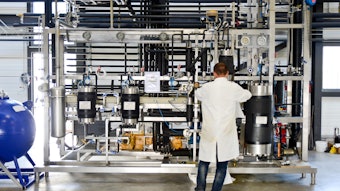Roman Chamomile Oil
Some samples of Roman chamomile that were produced from plants grown in Morocco were analyzed for their major constituents by Lahlou et al. (2000). The components characterized in these oils were:
isobutyl butyrate (2.0–9.0%)
isobutyl methacrylate (1.0–3.0%)
isobutyl isobutyrate (3.0–5.0%)
2-methylbutyl methacrylate (0.5–1.5%)
isobutyl angelate + isoamyl methacrylate (30.0–45.0%)
methallyl angelate* (6.0–10.0%)
2-methylbutyl angelate (3.0–7.0%)
isoamyl angelate (12.0–22.0%)
pinocarvone (1.3–4.0%)
trans-pinocarveol (2.0–5.0%)
* also known as 2-methyl-2-propenyl angelate
An oil and a supercritical fluid CO2 extract that were produced from the flowers of Roman chamomile plants grown in Iran from seeds obtained from Hungary were the subject of analysis by Omidbaigi et al. (2003). The constituents characterized in these two isolates are shown in T-1. As can be seen, the authors only characterized 73.8% of the oil and a mere 24.3% of the extract. They concluded the obvious—that the oil contained more volatiles than the extract.










